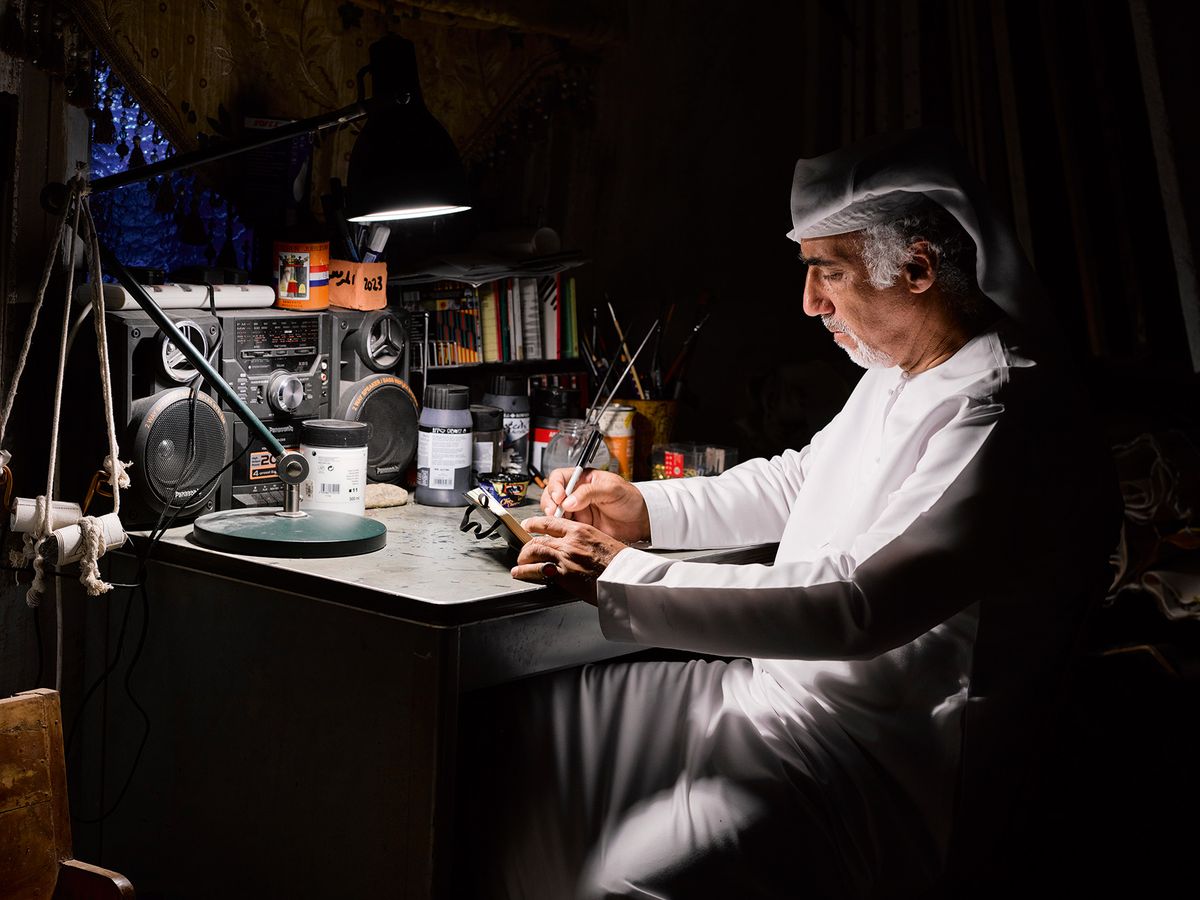Abdullah Al Saadi likes riding his bicycle. He has made numerous bike trips across the United Arab Emirates and overseas, drawing on the Arabian landscapes and his personal recollections (his 2015 piece The Silk Journey involved a ten-day ride through the eastern parts of the UAE and Oman).
Al Saadi is based in his birthplace of Khor Fakkan on the eastern coast of the UAE; he graduated from the United Arab Emirates University in 1993 in English literature and later studied Japanese painting at Kyoto Seika University (1994-96). He is one of five conceptual artists—including Hassan Sharif and Mohammed Kazem—who transformed the contemporary art scene in the 1980s in the UAE.
Al Saadi’s Biennale exhibition, Sites of Memory, Sites of Amnesia, presents works that chronicle his journeys across the Arabian Peninsula. The exhibition, curated by Tarek Abou El Fetouh, “proposes to look at his creative process in relation to the practices of Arab poets centuries ago”, says a project statement.
Will all your works for the Biennale show be new?
I am very excited about my solo exhibition for the national pavilion of the UAE. The exhibition focuses on works that I made on my journeys in the wilderness, featuring eight works: two new works especially commissioned for the exhibition, and six existing works. I always use diverse media and, for this exhibition, the works include drawings, paintings, painted rocks, scrolls and others.
What perspective of life in the UAE do you aim to present at the Biennale?
I am showing my work and my practice. The eight works in the exhibition are related to my journeys. On these journeys, I produce drawings and paintings of maps and the surrounding landscape, I write my diaries, and I depict what I witness on these journeys.
What was your first experience of art?
I started to draw and paint landscapes when I was a child in primary school. Since then, I have not stopped making art.
You seem to value collecting and preserving objects—why?
I have always been collecting objects that I can use in my artwork, and I choose them based on what I need for specific projects. I collect metal boxes that I use in my works for the journeys series, for the diaries and for other projects. I collect items that can be repurposed into my artwork—sweet tins, sardine cans and other things.
Would you describe your artistic output as prolific, progressing from using found objects to paintings and sculpture?
I work every day. There is no progression from one medium to the other, they are different works in their own right; I do them in parallel and sometimes they intersect.
Did studying in Japan give you insights into the production of manuscripts and scrolls?
Yes, definitely. For example, in Japan I started to draw on larger and longer scrolls, and I got to experience aspects of nature that I cannot see here in the UAE, like snow for example, and even earthquakes. And of course I got the chance to see and learn about Japanese art.
What did you learn from Hassan Sharif? Has friendship been a key
factor for you?
I met Hassan Sharif when I was still studying at university and started to visit the artists’ union in Sharjah. We were a group of friends, counting other artists as well. We all benefited from Hassan’s experience, and he also helped us to show our work and encouraged us to work on alternative ways of producing and sharing it with the public.
Artists can’t be alone: friendship among artists is very important, as it creates opportunities to discuss and develop our practices.
Was your work My Mother’s Letters (1998-2013) a way of memorialising your mother? Did she see the final piece?
The work is not a memorial. It is about communication, the difference between the old ways and today. My mother did not know how to read or to use modern communication tools. She would use stones, pieces of wood or plants to signal to me that she had visited my studio when I wasn’t there. This was her form of communication. I would collect these items and study them, and it was like a language form. There was ambiguity and mystery in her messages, a thing we do not have in our modern communication methods like WhatsApp, emails and phone calls, where you are direct.
Do you still write a diary (in a notebook or on canvas) and ride a bike?
I have been writing diaries for 40 years, in different formats. The notebook is my companion, I take it everywhere with me. And yes, I still ride a bike.


